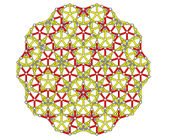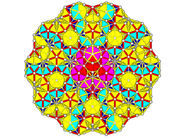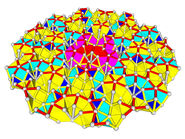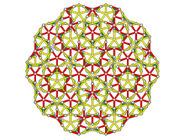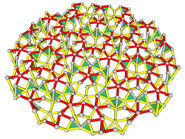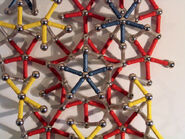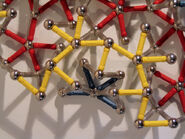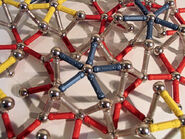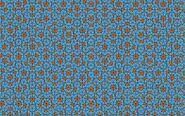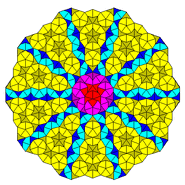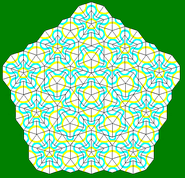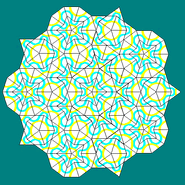Karl Horton (talk | contribs) mNo edit summary |
Amafirlian (talk | contribs) mNo edit summary |
||
| (7 intermediate revisions by 2 users not shown) | |||
| Line 1: | Line 1: | ||
| − | {{Geomag-construction|PageTitle=Penrose C4 Cartwheel|Title=Penrose C4 Cartwheel|Filename=Penrose C4 model.jpg|Caption=CAD model of a Penrose C4 cartwheel |
+ | {{Geomag-construction|PageTitle=Penrose C4 Cartwheel|Title=Penrose C4 Cartwheel|Filename=Penrose C4 model opt 2.jpg|Caption=CAD model of a Geomag Penrose C4 cartwheel |
|Type=[[:Category:Mathematical|Mathematical]] |
|Type=[[:Category:Mathematical|Mathematical]] |
||
| − | |Triangles=|Squares=|Pentagons=|Rhombic=|Rods= |
+ | |Triangles=126|Squares=|Pentagons=|Rhombic=|Rods=634+82|Spheres=361|Author=[[User:Amafirlian|Amafirlian]] 22:11, 5 August 2007 (UTC)}} |
| − | This is a placeholder for a Penrose C4 cartwheel. It |
+ | This is a placeholder for a Penrose C4 cartwheel. It can be built using the property that if you build a triangular pyramid on top of two connected rods that are spanning an angle of 72°, the top sphere is directly above the point where the sphere of a penrose dart needs to be. So looking from directly above (and ignoring the perspective distortion) this looks like penrose dart. By using two levels one can build a complete penrose tiling. Note that the central rod (grey in the model) is effectively a support rod. |
There is just one problem. When you put 2 Penrose darts built this way together, the two pyramids cause steric problems. The smallest angle between the rods is about 43°. The solution is to remove some of the rods that clash. |
There is just one problem. When you put 2 Penrose darts built this way together, the two pyramids cause steric problems. The smallest angle between the rods is about 43°. The solution is to remove some of the rods that clash. |
||
| + | Only the penrose darts can be filled with panels (2 triangular). After removing clashing rods only 126 remain. |
||
{{clr}} |
{{clr}} |
||
| + | |||
| + | ==Other views== |
||
| + | <gallery> |
||
| + | Image:Penrose C4 model.jpg|Top view (all rods). |
||
| + | Image:Penrose C4 model 2.jpg|Top view with colored faces (all rods). |
||
| + | Image:Penrose C4 model 3.jpg|View at an angle (all rods). |
||
| + | Image:Penrose C4 model opt.jpg|Top view after removing clashing rods. |
||
| + | Image:Penrose C4 model opt 2.jpg|View at an angle after removing clashing rods. |
||
| + | </gallery> |
||
| + | |||
==Partial views== |
==Partial views== |
||
| Line 16: | Line 27: | ||
Image:Penrose C4 partial c.jpg |
Image:Penrose C4 partial c.jpg |
||
Image:Penrose C4 partial d.jpg |
Image:Penrose C4 partial d.jpg |
||
| + | </gallery> |
||
| + | |||
| + | ==The real tiling== |
||
| + | |||
| + | It's quite difficult to ''see'' the tiling from the Geomag representation (I'm still pondering good ways to color the tilings in Geomag). Here are a some renderings of the ''real'' thing: |
||
| + | |||
| + | This paragraph and the picture below reproduced (permission sought) |
||
| + | from Steve Dutch's site: [http://www.uwgb.edu/DutchS/symmetry/penrose.htm link] |
||
| + | |||
| + | In some ways the pattern here, the Cartwheel, is the most important Penrose Tiling. The purple region at the center is outlined by a decagon consisting of a kite and dart edge. Every point in every tiling is contained inside an identical decagon (although the contents may differ). |
||
| + | |||
| + | The outer portion of the pattern consists of two parts. There are ten yellow sectors and ten blue spokes. The spokes consist of "bowtie" units and the spokes can be flipped 180 degrees and still fit their adjacent sectors. That means there are 1024 possible spoke arrangements but after rotations and reflections are eliminated there are only 62 distinct patterns. |
||
| + | |||
| + | <gallery> |
||
| + | Image:PenrosTilingEJ.jpg |Image generated by Junaid Rashid |
||
| + | Image:Dutch_Pencart.gif |Penrose Cartwheel by Steve Dutch |
||
| + | Image:Dutch_penrose_infinite_sun.gif |Penrose Infinite Sun by Steve Dutch |
||
| + | Image:Dutch_penrose_infinite_star.gif |Penrose Infinite Star by Steve Dutch |
||
</gallery> |
</gallery> |
||
| Line 22: | Line 51: | ||
*[http://www2.spsu.edu/math/tile/aperiodic/penrose/penrose2.htm Penrose kite and dart information] |
*[http://www2.spsu.edu/math/tile/aperiodic/penrose/penrose2.htm Penrose kite and dart information] |
||
*[http://www2.spsu.edu/math/tile/aperiodic/cartwheel/cartwheel1.htm Penrose Cartwheels] |
*[http://www2.spsu.edu/math/tile/aperiodic/cartwheel/cartwheel1.htm Penrose Cartwheels] |
||
| − | |||
* [http://www.flickr.com/photos/junaidrashid/449860244 Junaid Rashid's generated picture on flickr] |
* [http://www.flickr.com/photos/junaidrashid/449860244 Junaid Rashid's generated picture on flickr] |
||
Latest revision as of 19:22, 11 August 2007
| Penrose C4 Cartwheel | |
 CAD model of a Geomag Penrose C4 cartwheel | |
| Type | Mathematical |
| Panels | 126 × |
| Rods | 634+82 × |
| Spheres | 361 × |
| Author | Amafirlian 22:11, 5 August 2007 (UTC) |
This is a placeholder for a Penrose C4 cartwheel. It can be built using the property that if you build a triangular pyramid on top of two connected rods that are spanning an angle of 72°, the top sphere is directly above the point where the sphere of a penrose dart needs to be. So looking from directly above (and ignoring the perspective distortion) this looks like penrose dart. By using two levels one can build a complete penrose tiling. Note that the central rod (grey in the model) is effectively a support rod.
There is just one problem. When you put 2 Penrose darts built this way together, the two pyramids cause steric problems. The smallest angle between the rods is about 43°. The solution is to remove some of the rods that clash.
Only the penrose darts can be filled with panels (2 triangular). After removing clashing rods only 126 remain.
Other views[]
Partial views[]
The real tiling[]
It's quite difficult to see the tiling from the Geomag representation (I'm still pondering good ways to color the tilings in Geomag). Here are a some renderings of the real thing:
This paragraph and the picture below reproduced (permission sought) from Steve Dutch's site: link
In some ways the pattern here, the Cartwheel, is the most important Penrose Tiling. The purple region at the center is outlined by a decagon consisting of a kite and dart edge. Every point in every tiling is contained inside an identical decagon (although the contents may differ).
The outer portion of the pattern consists of two parts. There are ten yellow sectors and ten blue spokes. The spokes consist of "bowtie" units and the spokes can be flipped 180 degrees and still fit their adjacent sectors. That means there are 1024 possible spoke arrangements but after rotations and reflections are eliminated there are only 62 distinct patterns.
